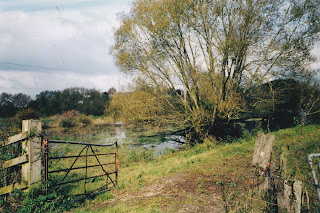Sounds of the wind
halyard
Oxford
Pronunciation: /ˈhaljəd/
noun a rope used for
raising and lowering a sail, yard, or flag on a sailing ship. Origin:late Middle English halier, from hale2 + -ier.
The change in the ending in the 18th century was due to association with yard1
When we were children my Gran would sometimes take me and my
brother down to the beach near their bungalow. The beach was rocky and we would
play happily for what felt like hours. On the way down the steep winding path
we had to pass the sailing club, it was only small and the boats lived in a
yard behind a high chicken wire fence at the top of the slipway, ready to be
launched into the muddy waters of the Bristol channel .
As we passed the boats they would always seem to play a symphony of jingling
music, and as a child I believed that boats had bells on the top of their
masts.
I understand now that a mast is hollow and the various ropes
which hold things up or keep things down will strike the mast if they are too
loose, this causes a noise which gets deeper the bigger the rope or mast is. If a
rope is being blown in the wind it will set up a rhythmic tune, if several
ropes are being blown marinas can become quite noisy. When it is on your boat
you know that not only is something not tight enough but also that that rope is
being damaged by being hit repeatedly against the mast and at night time the
noise becomes annoying enough for you to leave your bed and investigate (or in
my case usually kick the skipper out of bed so that he can investigate!).
As the winds outside reach near gale force and are expected
to get stronger as the week goes on we’ll be checking and fiddling with all our
ropes and probably listening to the sound of other boats playing along in the orchestra
of halyards in the marina.



Comments
Post a Comment